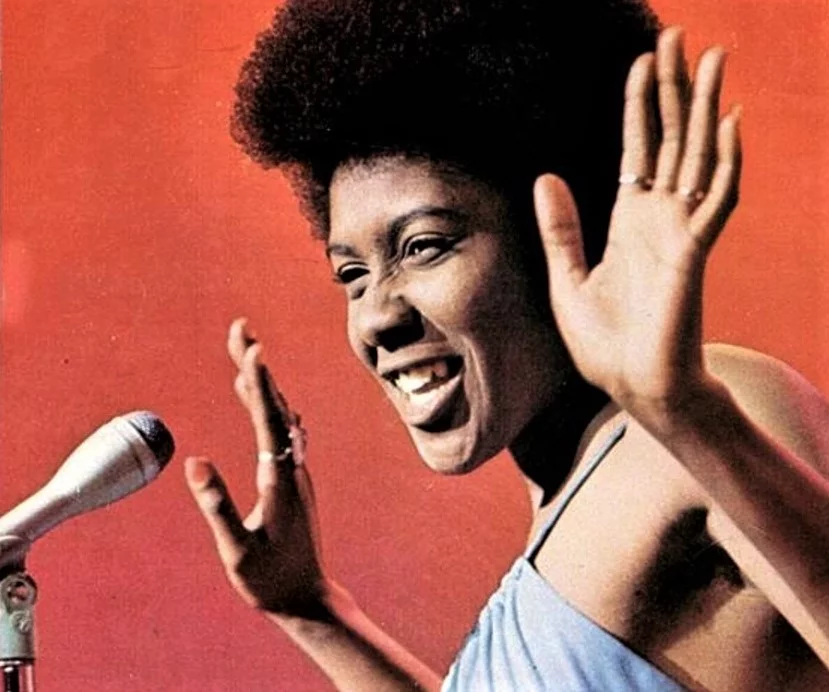Dorothy Moore still kicking 46 years after ‘Misty Blue’
November 3, 2021
For decades, the state of Mississippi has been called the “Home of the Blues.” The singing banjos and sound of feet tapping on wood planks can be heard in many American classics. Songs of love, heartbreak and family have made the shores of the Delta a melting pot for those from every neck of the woods.
In November of 1975, a new sound emerged, and its proprietor was a then-29-year-old woman named Dorothy Moore.
It seems as if music was Moore’s destiny from the start. Her father, Melvin Hendrix Sr., performed under the name Melvin Henderson as a member of the gospel quartet, The Five Blind Boys of Mississippi. Moore’s mother was also vocally gifted, receiving a music scholarship to Jackson State University.
Moore, under the care of her great grandmother, perfected her vocal abilities while performing within the walls of her local church and in high school talent shows. By the mid-1960s, Moore was performing in various venues across the Jackson area, including the historic Alamo Theatre. It was there that she discovered the blues, a sound that would shape many of her later works.
“I had no idea what it was,” Moore said. “I just liked the music.”
Moore’s life would begin to change after she received a knock on her door late one night. To Moore’s surprise, it was a producer from the Nashville-based Epic Records.
“He had just opened up a studio … and was looking for a girl he heard had been singing around town,” Moore said.
After this chance meeting, Moore, while attending Jackson State, became a member of an all-female group called The Poppies. The group, under Epic Records’ Date subsidiary, managed to score a hit in 1966 with “Lullaby of Love,” which peaked at No. 56 on the Billboard Hot 100.
Following the group disbandment, Moore went on to sing backup for various artists, including Stax Records artist Jean Knight on her 1971 hit “Mr. Big Stuff.”
During this time, Moore says she was relatively content with her career and did not plan on pursuing a solo career.
“It was just a fun thing for me,” Moore recalls. “I had no intentions of becoming a recording artist.”
Moore says it was Epic’s in-house producers who first noticed her unique abilities while she was providing backing vocals.
“When I was in that background, they noticed my voice,” Moore said. “Then they started me singing a little note here and there … and before you knew it, I was asked to record with Epic Records.”
After releasing several solo efforts on Epic, Moore inked a deal with the newly formed Malaco Records. She would release a number of ballads on the label before being presented with “Misty Blue,” a weary, heartbreak number originally written by Bob Montgomery and performed by country artist Wilma Burgess.
The song, undoubtedly an R&B classic, was not predicted to fare well amongst the music made popular by acts such as The Supremes and Martha & The Vandellas. After being recorded in one take, the song was shelved for two years.
It wasn’t until one of Moore’s labelmates, Eddie Floyd, heard the song that its hit potential was considered.
“[Eddie Floyd] was there with them and he heard “Misty Blue” and told them to put it out,” Moore said. “[He said] it was a hit.”
Moore felt as if the song needed a little touching up before it was released.
“I told them to let me come to the studio,” Moore said. “There was something I wanted to put on there before they released it.”
To fill the song’s relatively silent intro, Moore added her signature hum to the song.
The song, released in November of 1975, reached the Top 5 in several countries and was certified platinum in the U.S., gold in Canada and silver in the U.K. Moore would receive two nominations (of four in Moore’s career) at the 1976 Grammy Awards. It was later featured on several successful film soundtracks, including that of the 1996 film “Phenomenon,” which starred John Travolta.
Following the song’s release, Moore would begin an international tour that would allow her to make her presence known in various venues in and outside of the United States.
“I did every TV show that was hot at the time,” Moore said. “I [even] did country and western shows.”
Moore would also perform alongside some of the artists she had been a fan of prior to “Misty Blue,” including The Temptations, The Chi-Lites and The Stylistics, to name a few.
“They were fans of me off the songs I recorded,” Moore joyfully recalls. “And I was fans of theirs. I couldn’t believe it.”
Moore would follow “Misty Blue” with several hit songs including “Funny How Time Slips Away” (1976) and “I Believe You,” (1977), with the latter reaching the Top 5 on the R&B charts.
Since “Misty Blue,” Moore has released a number of albums, including a gospel album, “Giving It Straight to You,” in 1986. In 2002, she founded her own label, Farish Street Records, as an effort to have more control over her own material.
“I produce my own self now,” Moore noted. “I didn’t think I was going to love it this much.”
Moore says she enjoys the freedom to choose who she collaborates with and often employs the work of local musicians.
“You don’t have to go to California to find good people,” Moore said. “If they can play and sing, I’ll use them.”
In late 2020, Moore released her twenty-first album, “I’m Happy with The One I’ve Got Now.” The album, an independent release, is Delta blues at its finest, and beckons the listener to snap their fingers to the cry of the harmonica.
“I rented a studio out … and recorded the album there,” Moore said. “I had so much fun.”
Moore says the album, a gift to her fans, will be her last.
At age 75, Moore says that despite the numerous bookings she continues to receive, she feels the need to “slow down” a bit. As for her talent and success, Moore remains humble.
“It was God’s gift,” Moore said. “And I thank him for it.”



Andile • Sep 11, 2024 at 3:49 pm
Miss Moore has a very melodic voice I must say…
I am currently listening to Angel of The Morning. Been listening to this since 1994 and now 2024 and nothing has changed. True Master Piece.
Thank you for the wonderful music Miss Moore…M
Mark Steinfeld • Jan 10, 2022 at 9:06 pm
Just pure magic
Steve • Dec 27, 2021 at 8:58 pm
Dorothy (Miss) Moore: Misty Blue/He still think I care( She Does!) What a beautiful Voice, such a Wonderful Person.
I’ve played that song(Misty Blue) in every jukebox I know of in Jamaica.
Today: 12/27/21 I just listened to it again for 20 minutes continuously, just as I often do, and will continue,,,,,Until!
Manuel Valissa • Nov 3, 2021 at 11:05 pm
I’m so proud of you Jay. Congratulations and I’m looking forward on more to come.